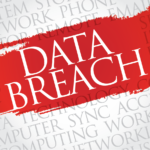
Equifax, one of the three largest U.S. consumer credit agencies, announced this month that a large data breach occurred estimated to affect 143 million Americans, or more than 57% of American adults.
This breach is believed to have included the theft of highly sensitive personal information, including Social Security numbers, names, birth dates, and addresses.
For this reason, we have outlined some immediate and long-term actions you can take to begin protecting yourself right away.
What You Need To Do
To see if you’re affected, and to protect yourself, use the tool Equifax has on their website. However, there have been reports that users are receiving inconsistent query results. Therefore, we recommend proceeding as if you were impacted, regardless of the lookup tool’s results. Here are four ways you can go about protecting yourself.
Protection Level 1 – Minimum (Free)
- Enroll in Equifax’s free identity theft protection and credit monitoring service, which has been made available for one year to all Americans who request it. This service provides monitoring of all three credit bureaus’ data at no cost.
- (Edit: TransUnion now also provides a free credit monitoring service, True Identity, which includes the ability to lock/unlock your credit just by logging in)
Note: Equifax has stated that utilizing their free monitoring service “does not waive any rights to take legal action” and has removed that language from their Terms of Use.
Protection Level 2 – Recommended Minimum (Free Options)
- In addition to the steps above, set up credit notifications through a free service like creditkarma.com, or one for Discover cardholders. Continue to utilize your free service of choice indefinitely.
Protection Level 3 – Recommended Minimum (Paid Options)
- In addition to the above actions, you may consider ongoing premium identity theft protection and credit monitoring services. These monitoring services include additional layers of identity protection, like:
- Insurance protection against financial loss caused by identity theft
- Assistance in identity restoration and what to do if your identity has been used to fraudulently establish accounts
- Alerts when your personal information is found on malicious websites (this is also free with Discover)
These options generally run $8 to $27 /mo per adult, and are cheaper with club memberships like Costco or Sam’s Club. Other options include USAA, Identity Guard, Equifax, Experian, and TransUnion.
Protection Level 4 – Strongest (Paid)
- If you have completed all previous steps and desire further protection, you may consider placing a “freeze” on your credit report. A credit freeze restricts all access to your credit file until the freeze is lifted. This can also delay or hinder legitimate inquiries, however.
- Importantly, there is a fee charged to place or remove a credit freeze, and in some cases to pause (e.g. $3 in Nebraska for adults who have not already been a victim of identity theft).
- You may establish a credit freeze with the three largest national agencies directly at these links: Equifax, Experian, and TransUnion. (Edit: Now that you may lock/unlock your credit report with TransUnion and Equifax for free online, a complete “freeze” may only be necessary on Experian today)
Note: You may experience delays or issues accessing the websites linked above due to high volume.
More Resources On Identity Protection
This brief summary does not cover all of your options available. For more information on how you can protect yourself from this data breach and better protect your identity in general, we recommend you visit the Federal Trade Commission’s website. If you’re a client of Callahan Financial Planning, you may also contact us with any additional questions, we’ll be happy to help.

